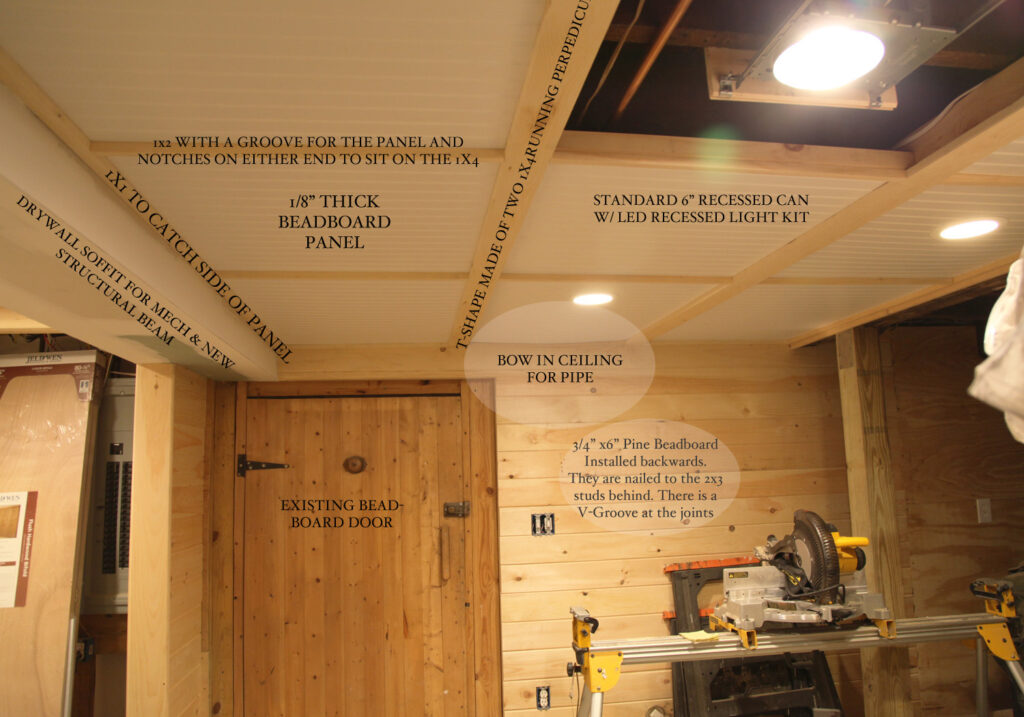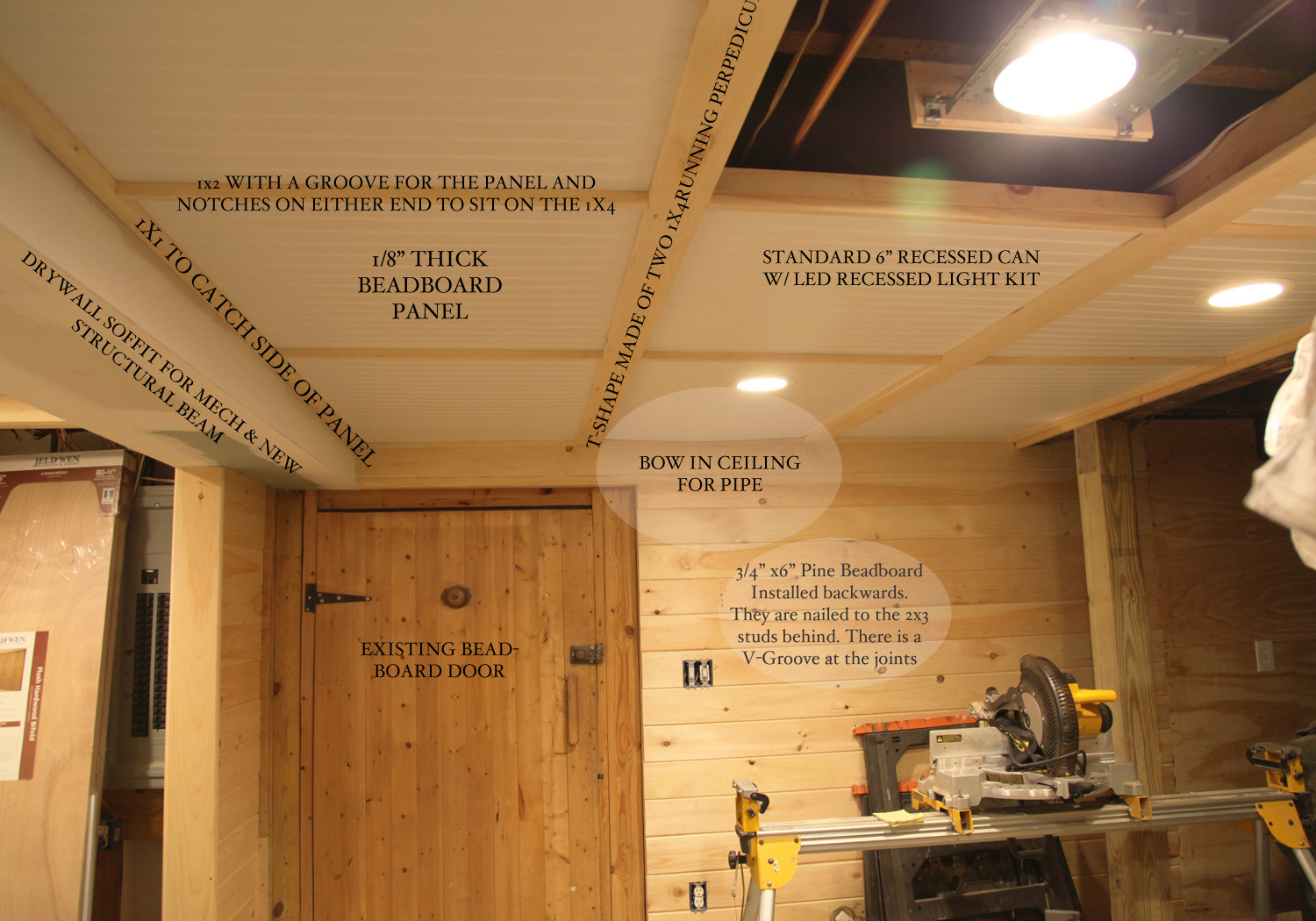
Decoding Bead Board Thickness: A Comprehensive Guide for Homeowners and Professionals
Bead board is a versatile and aesthetically pleasing material used in a wide range of applications, from wainscoting and ceilings to cabinet doors and furniture accents. One of the most important considerations when working with bead board is its thickness. The bead board thickness you choose will affect its durability, ease of installation, and overall aesthetic appeal. This comprehensive guide will delve into the various aspects of bead board thickness, helping you make informed decisions for your next project.
Understanding Bead Board and Its Uses
Before diving into the specifics of bead board thickness, let’s define what bead board is and explore its common applications. Bead board is typically a panel made of wood, MDF (medium-density fiberboard), or PVC, featuring vertical grooves or beads that run along its length. These beads create a textured, decorative surface that adds character and visual interest to any space. Bead board is frequently used for:
- Wainscoting: Protecting walls and adding a classic touch to hallways, bathrooms, and kitchens.
- Ceilings: Providing a decorative alternative to plain drywall ceilings.
- Cabinet Doors and Inserts: Enhancing the look of kitchen and bathroom cabinets.
- Furniture Accents: Adding detail to furniture pieces like headboards, dressers, and tables.
- Backsplashes: Creating a visually appealing and easy-to-clean surface behind sinks and stoves.
The Importance of Bead Board Thickness
The bead board thickness is a crucial factor that influences several aspects of its performance and appearance. Here’s why it matters:
- Durability: Thicker bead board is generally more durable and resistant to dents, scratches, and impacts. This is especially important for high-traffic areas or applications where the bead board is likely to be exposed to wear and tear.
- Stability: Thicker panels are less prone to warping or bending, ensuring a more stable and long-lasting installation. This is particularly important for large surfaces like walls and ceilings.
- Ease of Installation: While thinner bead board may be easier to cut and handle, it can also be more fragile and prone to damage during installation. Thicker bead board provides a more substantial surface for nailing or gluing, making it easier to achieve a secure and professional-looking installation.
- Aesthetic Appeal: The bead board thickness can also affect the overall aesthetic of the finished project. Thicker panels create a more pronounced and substantial look, while thinner panels offer a more subtle and delicate appearance.
Common Bead Board Thickness Options
Bead board is available in a range of thicknesses, each suited for different applications. Here are some of the most common options:
- 1/4 inch (6.35 mm): This is the thinnest option and is typically used for decorative applications where minimal thickness is required, such as cabinet door inserts or furniture accents. It’s lightweight and easy to cut, but it may not be suitable for high-impact areas.
- 3/8 inch (9.525 mm): A slightly thicker option that offers a good balance of durability and ease of installation. It’s often used for wainscoting, ceilings, and backsplashes in low-to-medium traffic areas.
- 1/2 inch (12.7 mm): A popular choice for wainscoting, ceilings, and other applications where added durability and stability are desired. It provides a more substantial look and feel than thinner options.
- 5/8 inch (15.875 mm): This is one of the thickest options commonly available and is ideal for high-traffic areas or applications where maximum durability is required, such as commercial spaces or areas prone to moisture.
- 3/4 inch (19.05 mm): While less common for standard beadboard, this thickness might be found when using individual boards to create a beadboard effect. This thickness offers exceptional durability and a very pronounced look.
Choosing the Right Bead Board Thickness for Your Project
Selecting the appropriate bead board thickness depends on several factors, including the intended application, the level of traffic in the area, and your desired aesthetic. Consider the following guidelines:
- Wainscoting: For residential wainscoting in low-to-medium traffic areas, 3/8 inch or 1/2 inch bead board is generally sufficient. For high-traffic areas or commercial spaces, consider using 5/8 inch bead board for added durability.
- Ceilings: 3/8 inch or 1/2 inch bead board is typically suitable for ceilings. Ensure that the ceiling framing is adequate to support the weight of the bead board.
- Cabinet Doors and Inserts: 1/4 inch bead board is often used for cabinet door inserts to minimize the overall thickness of the door. However, for a more substantial look, you can use 3/8 inch bead board.
- Furniture Accents: The bead board thickness for furniture accents depends on the desired aesthetic. 1/4 inch bead board can be used for delicate accents, while thicker options can be used for a more pronounced look.
- Backsplashes: 3/8 inch or 1/2 inch bead board is a good choice for backsplashes, providing a durable and easy-to-clean surface.
Factors to Consider Beyond Thickness
While bead board thickness is a primary consideration, other factors also play a role in the overall success of your project:
- Material: Bead board is available in wood, MDF, and PVC. Wood offers a natural look and can be stained or painted. MDF is a cost-effective option that is easy to work with and paint. PVC is moisture-resistant and ideal for bathrooms and kitchens.
- Bead Profile: The bead profile refers to the shape and spacing of the beads. Choose a bead profile that complements your overall design aesthetic.
- Finishing: Consider the finishing options available for the bead board. Some bead boards come pre-primed or pre-finished, while others require painting or staining.
- Installation Method: The installation method will depend on the type of bead board and the surface to which it is being attached. Common methods include nailing, gluing, and using specialized clips.
Working with Different Bead Board Materials
The material you choose for your beadboard will also influence the ideal bead board thickness and the way you work with it. Let’s explore the common materials:
- Wood Bead Board: Offers a classic look and feel. It can be stained or painted to match your decor. Wood is typically more expensive than MDF or PVC. When working with wood, consider the grain direction and potential for expansion and contraction due to humidity.
- MDF Bead Board: A budget-friendly option that’s easy to paint and provides a smooth surface. MDF is not as moisture-resistant as PVC, so it’s best used in dry areas. When installing MDF, use appropriate primers and sealers to prevent moisture absorption.
- PVC Bead Board: An excellent choice for bathrooms, kitchens, and other areas exposed to moisture. PVC is waterproof, easy to clean, and resistant to mold and mildew. It’s also lightweight and easy to install. While PVC is durable, it may not have the same aesthetic appeal as wood for some homeowners.
Installation Tips for Different Thicknesses
The installation process can vary slightly depending on the bead board thickness. Here are some general tips:
- Thinner Bead Board (1/4 inch – 3/8 inch): Requires careful handling to avoid damage. Use fine-gauge nails or construction adhesive to secure it to the substrate. Ensure the surface is smooth and even to prevent warping or buckling.
- Medium Bead Board (1/2 inch): Offers a good balance of stability and ease of installation. You can use nails, screws, or construction adhesive for secure attachment. Ensure proper spacing between fasteners to prevent cracking or splitting.
- Thicker Bead Board (5/8 inch and up): Provides a solid and durable installation. Use screws for added holding power, especially in high-traffic areas. Pre-drilling pilot holes can help prevent splitting, particularly with wood beadboard.
Cost Considerations
The bead board thickness can also impact the cost of your project. Thicker bead board typically costs more per square foot than thinner options. Consider your budget and the overall value you’ll receive from the chosen thickness. Remember to factor in the cost of materials (bead board, nails, adhesive, paint, etc.), as well as labor if you’re hiring a professional installer.
Maintaining Your Bead Board
Proper maintenance will help extend the life of your bead board and keep it looking its best. Clean your bead board regularly with a mild detergent and water. Avoid using harsh chemicals or abrasive cleaners, as they can damage the finish. For wood bead board, consider applying a sealant or varnish to protect it from moisture and scratches. Regularly inspect your bead board for signs of damage, such as cracks, dents, or warping, and repair them promptly to prevent further deterioration.
Conclusion: Making the Right Choice for Your Project
Choosing the correct bead board thickness is essential for ensuring the durability, stability, and aesthetic appeal of your project. By understanding the different options available and considering the factors outlined in this guide, you can make an informed decision that meets your specific needs and budget. Whether you’re installing wainscoting, ceilings, cabinet doors, or furniture accents, selecting the right bead board thickness will contribute to a successful and long-lasting result. Remember to consider the material, bead profile, finishing options, and installation method to achieve the desired look and performance. [See also: Installing Beadboard Ceilings] [See also: Painting Beadboard Wainscoting] [See also: Beadboard Alternatives] With careful planning and execution, you can transform your space with the timeless elegance of bead board.

